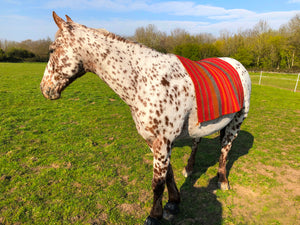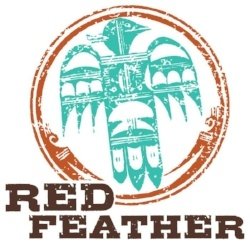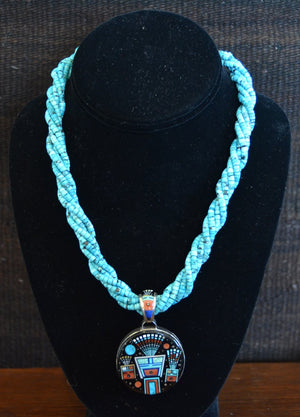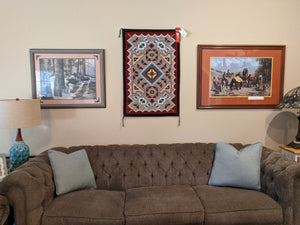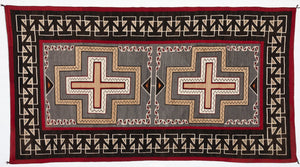Nizhoni Ranch News

What's In It for You?
Well, it is up to your interpretation. We are talking images in Navajo weavings. It is said that only 1% of Navajo weavings from the late 1800's to present have pictorial images. If pictorials or weavings with pictorial images have been off your list, you might want to re-think the design style.
Starting in the 1870's weavers were encouraged to move away from weaving only wearing blankets to weaving rugs, items for the tourist trade, commission pieces and more. As time passed weavers began to incorporate personal expression. Objects they saw or imagined would make their way into a weaving. It could be something as simple as letters of the alphabet, numbers, spiritual image or an object they saw. What do the images mean? That is where interpretation comes into play.
Below is a selection of weavings with pictorial elements. Click here to view our entire pictorial collection.
Transitional Pictorial Navajo Weaving: Historic : JV 109 : $ 9,000
Yei Foxtail Navajo Weaving : Historic : 1939 : GHT 2168 : $ 9,500
Double Navajo Saddle Blanket : Antique : JV 102 : $ 6,500
Pictorial - Squaw Dance Navajo Weaving : Juanita Tsosie : B-13 : $10,000
Teec Nos Pos Pictorial Navajo Rug Weaving : 24 Cans: PC 14 : $ 19,500
Germantown Masonic Pictorial Tapestry : Navajo : Historic : PC 4 : $ 18,000
- Beth Barth

Not Just Another Pretty Face!
A dear client who lives in England recently lent one of his historic Navajo saddle blankets to his friend Julia Roberts and her award winning dressage horse Crunchie. Douglas thought Crunchie would look smashing wearing the saddle blanket. We agree. We also think Crunchie is absolutely beautiful au naturel. Love of Navajo weaving knows no borders - thank you Douglas, Julia and Crunchie for sharing.
- Beth Barth

Red Feather Changes Lives
Got a minute? Well, 2 exactly. Check out this uplifting video update from Red Feather - Giving Tuesday. It's been a long hard year, we are grateful for Red Feather and all those who support this outstanding organization. It is wonderful to see light during such a dark time.
- Beth Barth

Holiday Gift Picks of the Season
We have made shopping for the special people in your life even easier. Our Holiday Gift Picks for the Season gift guide showcases a few of our favorite pieces from many different categories and price ranges. To view our Holiday Gift Picks of the Season click here.
Even better - if you like we will wrap the gift along, add your personal message and ship direct for FREE! The order date deadline for December 25th arrival (for delivery in the U.S.A.) is December 17!!
Don't forget our 25% off sale is on. The discount will be applied to the price when the item is added to your cart! Be sure to provide the ship to address and in the order notes area of your shopping cart provide your gift message. If you have something in mind and can't find it - call Beth and she'll help!
- Beth Barth

Teec Nos Pos Gallery Show 2020
Currently at the Gallery
We have filled the walls with some of our favorite Native American Teec Nos Pos weavings. Check out the video above. To view all Teec Nos Pos available click here.
History of Teec Nos Pos Rugs
Widely considered to be the most intricate and detailed of all Navajo rug designed, Teec Nos Pos Rugs offer a truly exceptional and distinct look. Named after a location important to the Navajo, this “Ring of Cottonwood Trees” has produced two distinct styles that have both long been influenced by the tightly-woven, brightly-colored Persian rugs of the Middle East. Large, bold and colorful, Teec Nos Pos boast a weaving unlike any other. Located in the northeast corner of Arizona, Teec Nos Pos rugs rose to prominence in 1905, spinning off of J.B. Moore’s Crystal Weaving Style. Since that time, Teec Nos Pos rugs have most often displayed one of two unique stylizations—one boasting elaborate geometric motifs and the other a collection of zig zag patterns with distinct borders. The zigzag patterns being the only designs to be carried forward from the pre-1900 blanket designs.
Elegant Patterns
The most amazing aspect of Teec Nos Pos rugs is the fact that weavers working in this area, were some of the most technically skilled weavers working on the Navajo reservation at this time. Traditional weavers often create the finished rug simply from a vision they have in their head and rarely from something drawn to paper. This unique choice lets the adventurous spirit, instinct and beauty of the Navajo culture shine through with each hand woven expression of art.
Unmatched Artistry
Navajo weavers are still using the same longstanding techniques passed down from generation to generation, even as it comes to shearing and cleaning wool, carding, dyeing and hand spinning. That’s why Nizhoni Ranch Gallery rugs feature an array of colors seen nowhere else in contemporary Navajo weaving, allowing weavers to deftly capture shapes, images, designs and styles.
Skillful Complexity
The Navajo that create the Teec Nos Pos rugs for the Nizhoni Ranch Gallery are highly-experienced weavers and craftsmen that perfectly balance the fineness of each woolen strand with the tightness of the weave. This allows highly-detailed patterns to shine through on each piece without sacrificing comfort, durability or overall artistry. In fact, the amount of work that goes into each of these handmade Navajo rugs means that every single one is completely unique. Some weavings can take up to 2 years to create on the traditional loom. NRG supports and encourages each weaver to work as long as it takes to accomplish their masterpieces.
- Beth Barth

What is a Unicorn in the Navajo Weaving World?
One in a million? You bet!
We have discovered the Holy Grail for a Navajo textile collector. This 1st Phase Navajo Chief Blanket is not a Classic, but is truly an EARLY Classic Ute.
This is one of the finest woven Ute Style 1st Phase Chief Blankets. There are approximately 65 Early Classic 1st Phase Chief Blankets known to exist. Approximately half are permanently in museums or in other institutions.
Many have heard about the Antique Roadshow episode filmed in Tucson where a very nice man was informed a rug that had been passed down to him was, in fact an Early Classic Ute Blanket. If you haven't seen the episode or it's been a while it is a heart warming tale!
- Beth Barth














